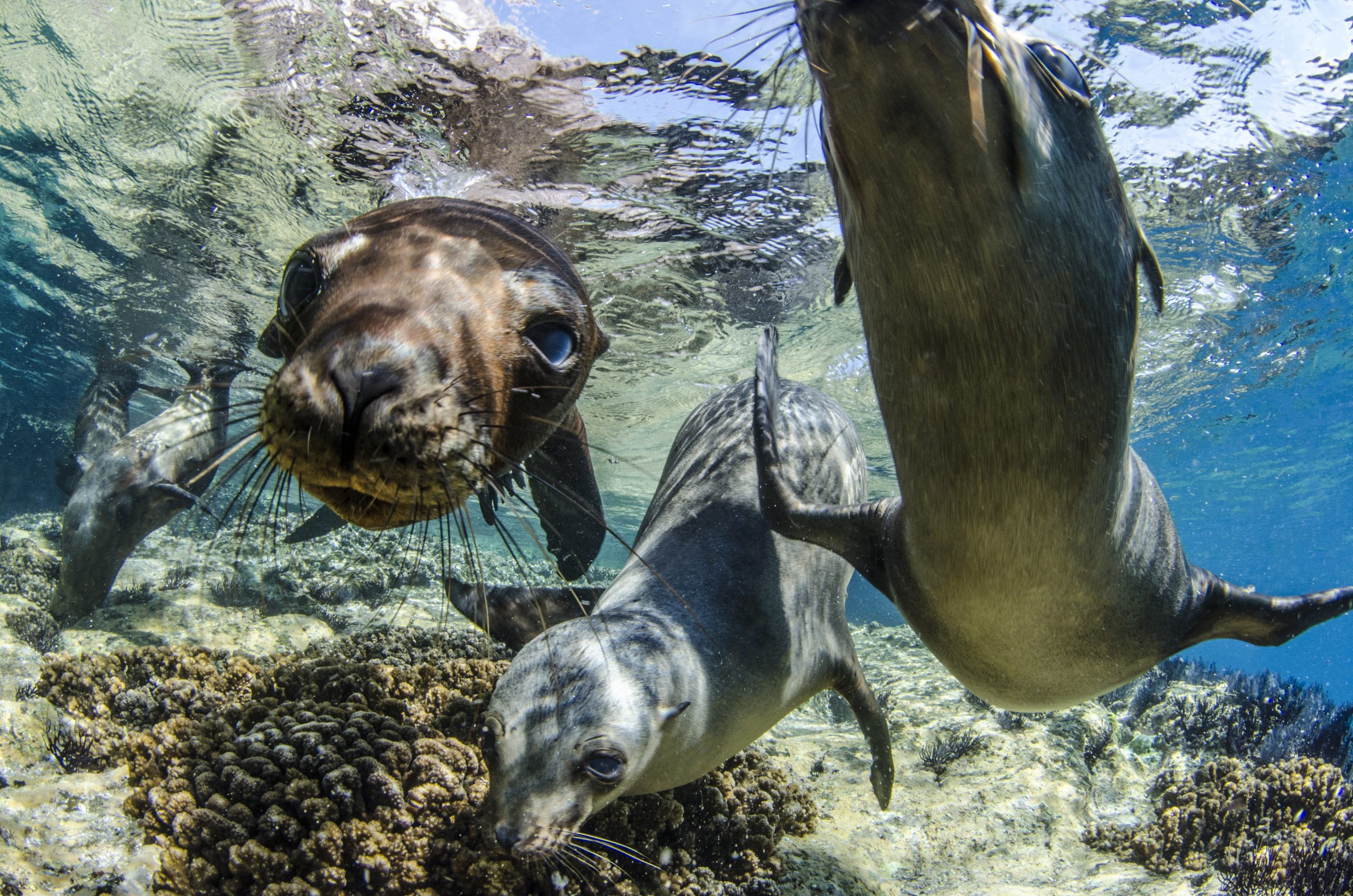Measured ecological variables (by MPA management or partner organisations)
Research and monitoring
- Last updated | 18 August 2023
Within an MPA (or any other area for which marine mammal monitoring is to be undertaken), it must be decided which ecological variables should be given highest priority. The goals and objectives of the management plan should provide a guide, as should the particular activities and threats that occur within the MPA. By monitoring the status and trends of marine mammal populations and the environmental conditions provide a feedback mechanism to the management plan, to ensure that the proposed mitigation measures efficacious [1].

The particular marine mammal species found within an MPA, along with the types and intensities of human activities within an MPA, will drive questions that require the measurement of specific variables. In other words, not every ecological measure will be appropriate or require high-level priority. For example, Stellwagen Bank National Marine Sanctuary is subject to intense shipping traffic. Therefore, large whale movement patterns, as well as underwater noise, are monitored in order to seek a solution to vessel strike and acoustic impacts [3]. Where a whale-watching industry is active, such as in the Canary Islands, behavioural variables will often be recorded [4]. Where terrestrial runoff from agriculture is potentially an issue for coastal habitats, physical water parameters in the marine environment may be of high importance.
The need to monitor specific variables may also vary based on the marine mammal species of interest. While the monitoring of noise is especially relevant to some cetaceans [5], central to dugong or manatee conservation is the monitoring of seagrass abundance [6], for example.
The variables that are able to be monitored will be largely dependent on the financial and human resource capacity of the MPA management and partner organisations. While the use of existing data such as incidental sightings and strandings can help establish or add to species lists and rough measures of diversity, variables such as abundance, habitat usage, population structure, behaviour and the impacts of threats become more complex, expensive and require specialised skills. Often, resources will be insufficient to fully implement an ideal monitoring regime; therefore, those variables that are most crucial to the assessment of the management goals should be prioritised [7].
Experts from partner organisations can help to form the monitoring strategy. Expertise and capacity within partner organisations may also influence what variables can be monitored, but the MPA, through direct or indirect funding, can help guide the monitoring by partner organisations.
The COMPASS (Collaborative Oceanography and Monitoring for Protected Areas and Species) Interreg ‘Marine Mammals’ work package has been developed to implement a future-proof passive acoustic monitoring (PAM) programme for marine mammals (cetaceans and pinnipeds) for a cross-border network of MPAs.
Through a network of PAM stations, within current and proposed MPAs, within the border region of the Republic of Ireland, Northern Ireland and Western Scotland, collected data across spatial and temporal scales are recorded from mobile species (including harbour porpoises, dolphins, baleen whales and seals, which are utilised to highlight large-scale seasonal targets.
The analysed data provide support to existing threats from anthropogenic pressures to develop comprehensive management and monitoring plans for MPA networks.
[1] PDF: UNEP-MAP RAC/SPA, 2011. Guidelines for the Establishment and Management of Marine Protected Areas for Cetaceans. By Giuseppe Notarbartolo di Sciara. Ed. ACCOBAMS-RAC/SPA, Tunis. 36pp.
[2] PDF: Clark, J., Dolman, S.J. and Hoyt, E. 2010. Towards Marine Protected Areas for Cetaceans in Scotland, England and Wales: A scientific review identifying critical habitat with key recommendations. Whale and Dolphin Conservation Society, Chippenham, UK, 178pp
[3] Webpage: Stellwagen Bank National Marine Sanctuary: Science
[4] Webpage: IWC Whale Watching Handbook: Spain
[5] PDF: Reducing Impacts of Noise from Human Activities on Cetaceans
[6] PDF: Australian Government Seagrass Value Assessment Guidelines
[7] PDF: Kelleher, G. (1999). Guidelines for Marine Protected Areas. IUCN, Gland, Switzerland and Cambridge, UK. xxiv +107pp
If you would like to get in contact with us, please use the button below.
Copyright 2022 © All rights Reserved. Design by piknetart.com